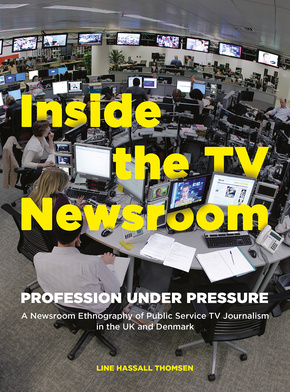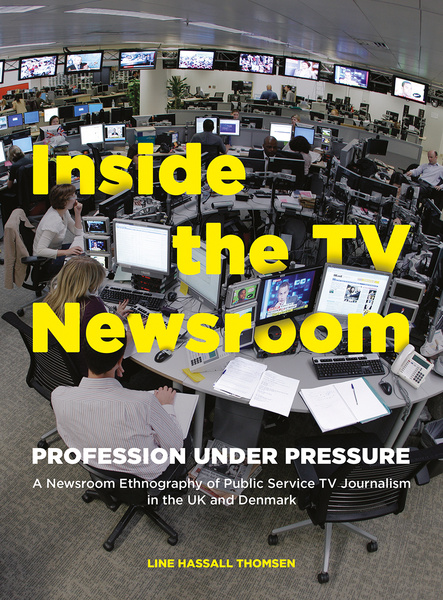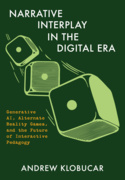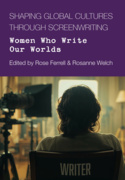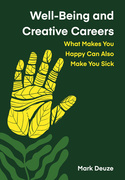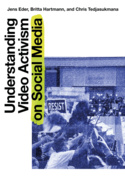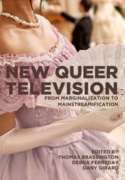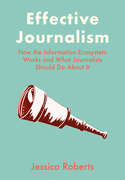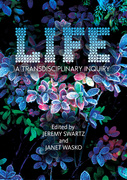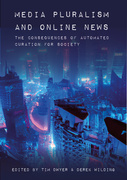Inside the TV Newsroom (Book)
Profession Under Pressure
In an era where the way people get news is ever-changing, how do broadcast journalists work? How do changes to the field affect journalists at traditional public broadcasters? And what similarities are there between license-funded news programmes – like those on the BBC – and commercial news? This book, built on years of unique access to the newsrooms of BBC News and ITV News in the United Kingdom and DR TV Avisen and TV2 Nyhedeme in Denmark, answers those questions and more. Exploring the shared professional ideals of journalists, the study analyses how they conceive of stories as important, and how their ideals relating to their work are expressed and aspired to in everyday practice.
Edition
In an era where the way people get news is ever-changing, how do broadcast journalists work? How do changes to the field affect journalists at traditional public broadcasters? And what similarities are there between license-funded news programmes – like those on the BBC - and commercial news?
This book, built on years of unique access to the newsrooms of BBC News and ITV News in the United Kingdom and DR TV Avisen and TV2 Nyhedeme in Denmark, answers those questions and more. Exploring the shared professional ideals of journalists, the study analyses how they conceive of stories as important, and how their ideals relating to their work are expressed and aspired to in everyday practice.
Line Hassall Thomsen has a PhD in editorial culture.
Part I: Journalists and Newsrooms as Objects of Research
Introduction
Chapter 1: Studying Journalists at Work
1.1 Review of News Production Studies
1.2 Journalism as a Profession
1.3 Media Anthropology with a Focus on Production
1.4 Conclusions
Part II: An Anthropologist Among Journalists
Chapter 2: Anthropology as a Method of Studying Journalists at Work
2.1 Entering the Newsroom
2.2 Conducting Fieldwork
2.3 Access: A Constant Negotiation
2.4 The Obstacle of Imagining Differences but Finding Similarities
2.5 The Interview
2.6 Presenting the Field
27 Conclusions
Part III: Introducing the Four News Divisions and a Relationship of Constant Competition
Chapter 3: Talking About Differences: How News Workers Define Themselves and Each Other
3.1 Monopoly and Duopoly of Broadcasting
3.2 Being ‘Best’ as Boundary-making
3.3 A Shared Struggle
3.4 When Broadcasters Agree
3.5 Conclusions
Part IV: Inside the New Newsrooms
Chapter 4: A New Design of the Old Newsroom
4.1 The Market Logic of Changing the Newsroom
4.2 Inside the Newsroom: Spatial Layout
4.3 Inside the Newsroom: Editorial Meetings
4.4 Conclusions
Chapter 5: Negotiating the Newsroom
5.1 Negotiating the Stage
5.2 A Room Where Someone Is Always Watching
5.3 The Stage is Set
5.4 ‘Multi-skilling’ as the Term for What Went Wrong
5.5 Conclusions
Part V: New Struggles and Old Ideals
Chapter 6: The Unity and Community of Journalists
6.1 Following Connections between the Newsrooms
6.2 Communities of Practice and the Imagined Colleagues
6.3 The Constant Peer Review
6.4 How Pride and a Distance to The Others Unites
6.5 Conclusions
Chapter 7: The ‘Good’ Journalist: An Old Ideal
7.1 A Shared Value
7.2 Good Work as a Public Service
7.3 The ‘Good News Story’
7.4 Good Work as ‘Very Scout-Like’
7.5 Conclusions
Part VI: Exiting the Newsroom
Chapter 8: Conclusion: A Profession Under Pressure
8.1 Connections Across Newsrooms
8.2 New Struggles to Reach Old Ideals?
8.3 Methodological Considerations
8.4 Primary Contributions
Epilogue
Summary
Appendix
References
Index

